The human arm is a paradox of rigidity and flexibility, and there are many scenarios in life where a combination of rigidity and flexibility is required.
For example, when hanging a picture on a white wall with a nail, a person will first grip the nail towards the wall, then pick up a hammer or other tool, and strike a few times to drive the tip of the nail into the wall about one-third of the way. After that, they will continue to gently tap a few more times to ensure that the nail is embedded two-thirds into the wall, allowing the picture to hang properly, all completed within a minute.
If the “force” is not controlled well and too much force is applied, driving the nail completely into the wall would be quite embarrassing.
This seemingly simple action has proven to be quite challenging for robots, which still struggle to “control” their force quickly and effectively. Driving a nail into a wall has become a common action for robots.
This action, which can easily lead to damage even with the addition of sensors, limits robots’ efficiency in many scenarios, such as furniture assembly, high-precision metal polishing, medical services, and electronic assembly.
Finding a solution to this problem has become a cutting-edge technological direction for Chinese robotics to explore larger market possibilities. Under the guidance of Professor Song Aiguo, a leading expert in the field of force feedback in China, a domestic company called Zengguang Intelligent has deeply explored and made preliminary progress in this research.
▍What Are the Challenges?
The many characteristics exhibited in this experiment are often contradictory in scientific research.
For instance, while robots or mechanical arms struggle to perform the delicate action of “driving a nail,” human hands can easily accomplish it. The reason lies in the limitations of mechanical structural characteristics.
Generally, a mechanical arm consists of a motor, a reducer, and linkages. From a mechanical principle perspective, decomposing and planning actions to known poses requires inverse kinematics to obtain motor angles for high-precision restoration and implementation.
This means that the execution of robots is affected by dynamic interferences such as servo performance, encoder resolution, motor friction, and joint coupling, as well as structural interferences like reducer friction and backlash. Using a hammer to drive a nail is a representative case of applying large forces for fine force control, which places high demands on the friction of the transmission structure.

In simpler terms, most commercially available force-controlled robots, or traditional mechanical structures, can only achieve instantaneous force output, making it difficult to control and adjust force in real-time, which prevents the execution of such actions.
On a deeper level, using a hammer to strike something requires the mechanical structure to respond instantaneously, with rapid changes occurring suddenly. This not only requires the instantaneous output torque to be quickly adjustable but also demands that the mechanical structure can promptly transmit and respond to such signals, which imposes excessive requirements on bandwidth, structure, and inherent rigidity, making it very easy to damage sensors and reducers.
Since bandwidth cannot be infinitely high, the response speed of computing devices and various sensors also has certain physical limits, leading to an upper limit on the robot’s instantaneous response capability. For example, collaborative robots or force-controlled robots typically operate with a force calculation frequency controlled between 4K-8K to ensure normal operation.
In contrast, human hands have virtually no bandwidth limitations; they can easily perform the action of holding a hammer to drive a nail and can also gently touch the head of a nail with very light force. This is because human hands can sensitively perceive the surface of objects and judge and control the required force, giving them a very large dynamic range in both surface recognition and the speed of force response and output.
Achieving a balance of rigidity and flexibility in robots, akin to human capabilities, has been a goal for many robotics companies. However, due to the difficulty in overcoming the wear and tear of forces in mechanical structures, the seemingly simple yet inherently complex and contradictory characteristics of “high speed and large force” versus “small force and large force” have not been realized in robots for nearly a century.
▍The Beginning of Innovation
With this understanding, we can look at the flexible humanoid actuator launched by Zengguang Intelligent and discover some incredible innovations.
First, as seen in this video, all actions are demonstrated without the use of force sensors, but rather through an open-loop actuator structure.
A person can gently push the actuator’s linkage, or even just blow a breath, to move it.
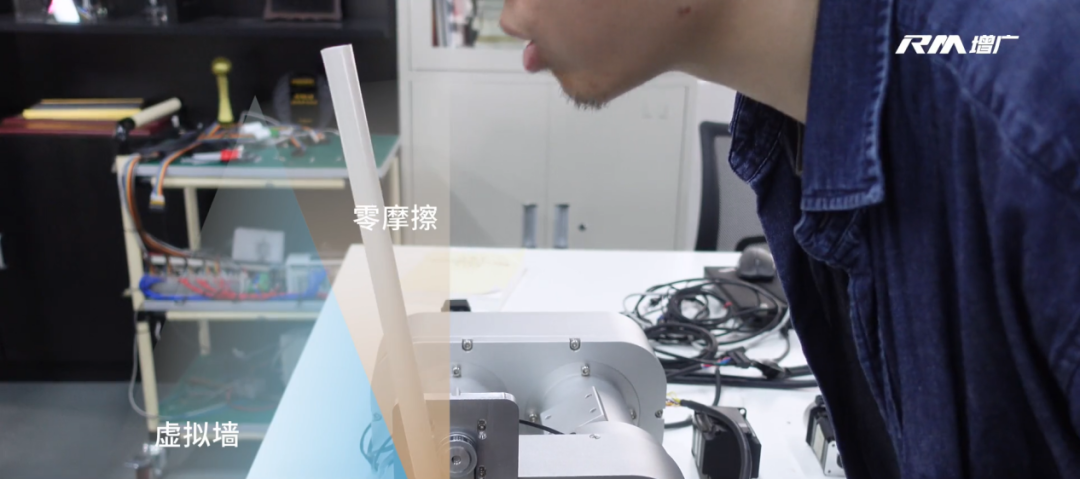
This means that the friction of the actuator can be made nearly zero, allowing for a high degree of compliance, while damping can also be controlled, showcasing the actuator’s high sensitivity and rapid precision response.
The output range is equally astonishing; this flexible humanoid actuator has a vast dynamic output range, capable of producing both high and low forces, with force control performance rivaling that of human hands.
The most intuitive example is the action of “driving a nail”; whether striking lightly to leave it halfway or driving it all the way in with force, both have become possible with this flexible humanoid actuator. This reflects the contradiction between small force and high speed, as well as between rigid and flexible objects, which was previously difficult to present within the same mechanical structure.
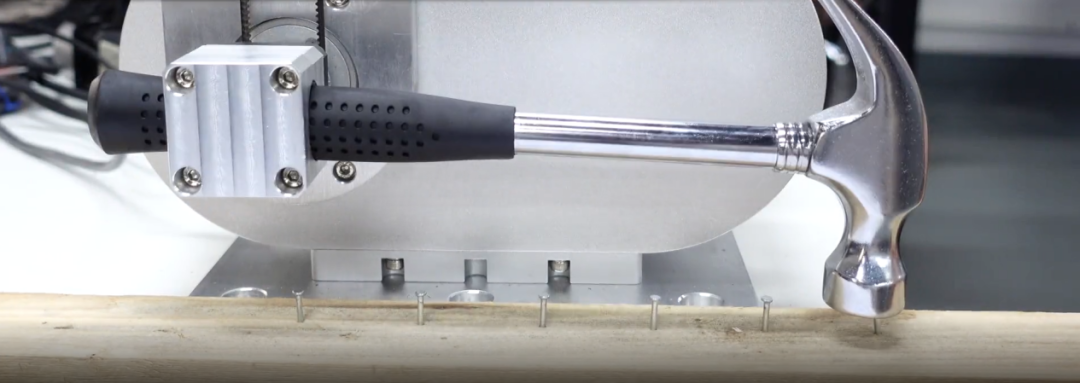
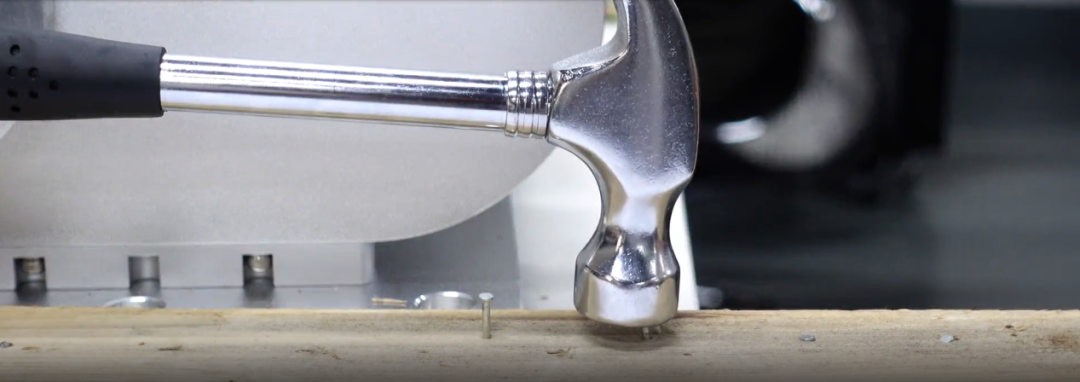
Remarkably, under external force disturbances, such as testing with a hammer, the original structural characteristics did not show significant deviation or change. The video explains that this flexible humanoid actuator can withstand impacts, and even collisions do not damage the machine, ensuring its maintainability.
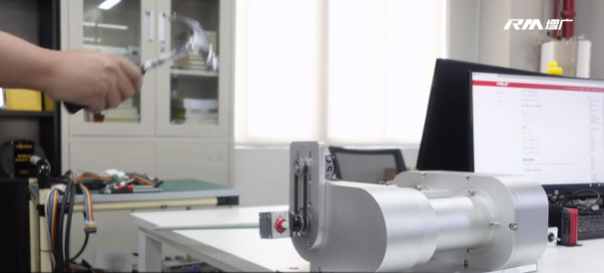
Additionally, Zengguang Intelligent’s flexible humanoid actuator also demonstrates characteristics of safe human-robot interaction. During motion, if a human hand suddenly grasps and moves, it does not affect the trajectory, indicating that even during high-speed trajectory movements, the actuator can maintain compatibility and safety.
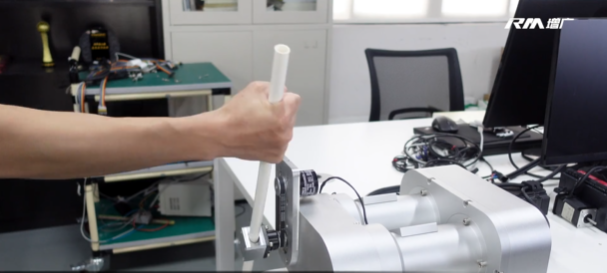
Moreover, the wide bandwidth supports high-frequency vibrations, with a maximum frequency reaching 30Hz, meaning its motion feedback is instantaneous beyond people’s imagination.
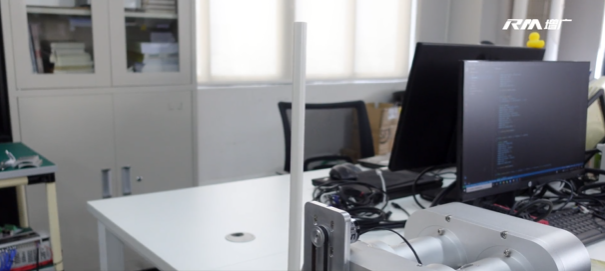
Because this flexible humanoid actuator can achieve high sensitivity force control without force sensors and eliminate the influence of friction, it simultaneously meets the requirements for a large output range, fast response speed, and zero friction, making its actions more human-like. This is undoubtedly a disruptive technological innovation in the field of motion control!
▍Exploring Greater Application Possibilities
This product not only reflects an overall innovation in mechanical structure but also raises the question of whether it can have numerous possibilities in the future market. The Robot Lecture Hall interviewed Mr. Huang Anjie, CEO of Zengguang Intelligent, for insights.
According to Huang Anjie, the video showcases not just a single-axis structure product; this structure is not limited by materials or environments and has strong replicability, making it possible to expand into three-axis or six-degree-of-freedom products in the future.
“Zengguang Intelligent’s flexible humanoid actuator innovates in kinematic principles and mechanical structures. Currently, most mainstream actuators use force sensors, motors, and reducers to control force. This new actuator’s technological route is entirely different from previous methods, allowing for large forces and rapid responses. This presents a vast imaginative space in medical and industrial scenarios,” Huang Anjie explained.
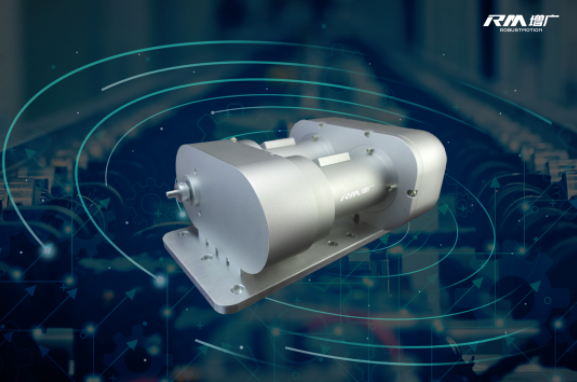
In terms of force, speed, sensitivity, and motion rhythm, there are many contradictions. For example, a question on Zhihu asked whether increasing the reduction ratio of the reducer to improve joint positioning accuracy and thus enhance the end-effector precision of the robotic arm is feasible. A respondent pointed out that since a robot is a highly integrated electromechanical structure, improving any single point often affects the entire system, making the difficulty of addressing any issue exponentially increase.
For instance, in the polishing field, many scenarios demand high requirements for both polishing speed and precision. The differences between robots and human hands remain significant; human hands can adapt to faster and larger force variations, while high-precision polishing places high demands on robots’ force control and response speed, leading to rapid joint wear and making some scenarios difficult to open up.
This flexible humanoid actuator provides a solution that responds quickly while accommodating both high and low outputs, perfectly achieving the balance of both. With many robust characteristics that align with human capabilities, it is highly suitable for applications in rehabilitation, industrial polishing, assembly, and can also open up imaginative spaces for robotics companies to explore more human-related interactions such as massage and therapy. Additionally, it can be applied in new automation, medical, and experimental research fields such as hand controllers and remote operations.
Of course, the flexible humanoid actuator’s potential still awaits further exploration by more companies and research institutions.
▍Conclusion and Outlook
As high-precision technology fields such as automotive, 3C, semiconductors, and biomedicine continue to develop, the market’s demands for product capacity and yield have significantly increased, leading to stricter requirements for the precision, speed, and force of automation production equipment manufacturers’ products. Finding higher-performance precision motion components to enhance the quality and standards of final products or overall solutions has always been a challenge for robotics companies and many integrators.
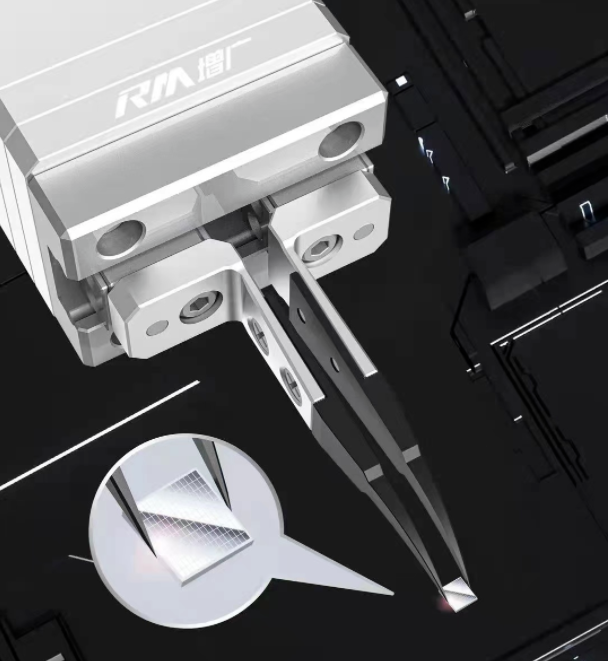
The Robot Lecture Hall learned that Huang Anjie, CEO of Zengguang Intelligent, recognized this trend during his studies under Professor Song Aiguo in 2013. After graduating from Southeast University with a degree in Instrument Science, Huang Anjie soon embarked on his entrepreneurial journey.
In 2015, Huang Anjie keenly identified the application prospects of multi-axis linkage technology in the industrial market and began developing technologies related to end-effectors.
In 2016, Huang Anjie formed a team to tackle the first generation of actuator control technology, ultimately creating various forms of products, including intelligent grippers, smart push rods, and rotary cylinders.
In 2018, Huang Anjie officially established Zengguang Intelligent, collaborating with Chief Scientist Professor Song Aiguo, who has over 30 years of experience in force feedback technology research, to benchmark against foreign actuator leaders like SMC and Festo, positioning the company as a provider of intelligent execution systems and precision force control solutions, thus embarking on the commercialization path of domestic actuators.
With strong advantages in process algorithms and a complete process software system, Zengguang’s intelligent actuators, controllers, and transmission components have all been independently developed, with prices ranging from 10% to 40% lower than similar foreign products. The company has established close collaborations with leading enterprises such as Huawei, Foxconn, BYD, Sunny Optical, and BGI, growing into a leading company in the domestic intelligent actuator field.
In 2021, Zengguang Intelligent received several million yuan in Pre-A round investment from Fan Chuang Capital, and is currently preparing for a new round of financing, continuously exploring more possibilities in high-precision fields such as electronics, semiconductors, medical, automotive, new energy, warehousing logistics, intelligent equipment, and military industry.
——————-END——————-

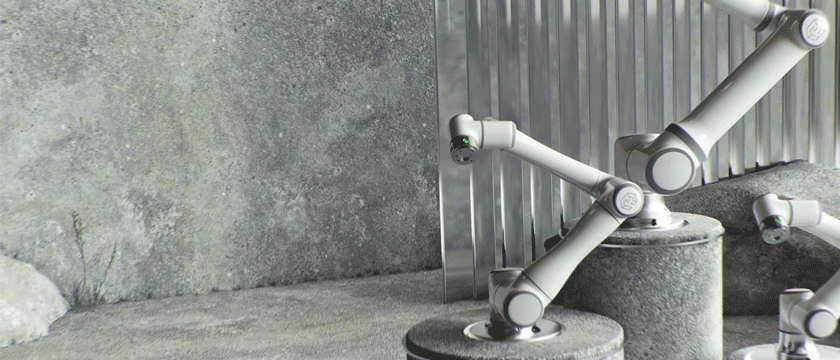

More Exciting Content
*The first robot cat for students, can be used to learn coding!
*Is the growth of the robotics industry slowing down? People’s Daily: “Unlock” new demand scenarios, the long-term positive trend remains unchanged.
*10 million yuan! The Ministry of Education’s industry-university cooperation education plan, provincial and ministerial-level vertical projects!
*Is another quadruped robot company rising? This time it really has “muscles”!
*Weekly News | Weekly Summary of Corporate News
*Combining emotion and safety, multifunctional integration, AI elderly care may become a new path for elderly care?
*【Good News】 After-sales treasure received hundreds of millions in A1 and A2 rounds of financing, Sequoia Seed and Tiger Global led the investment.
*”A beam of light” allows robots to have a sense of touch? This technology from Zhijiang Laboratory amazes the world.
*New products launched, quality and technology fully upgraded, Atongmu helps improve efficiency by 100%.
*Super strong crossover! Pudu Technology enters the quadruped robot field, launching the first quadruped delivery robot D1.
*The application of dual-arm collaborative intelligent robot assembly systems in aerospace.
*Modular design enables delivery to the table; this company received $81 million in investment, with SoftBank as a shareholder.
*3D vision + unordered grabbing, dual support creates infinite possibilities for intelligent manufacturing.
*Kawasaki Heavy Industries’ “Antelope” quadruped robot debuts, resembling a Miyazaki animation, capable of carrying 100 kg!
*Collaborative robots screw “steadily, accurately, and quickly,” significantly improving automotive assembly efficiency.
*Following computers, robots are becoming the new generation of infrastructure in education.
*Weekly News | Weekly Overview of Robotics Industry News.
*【Official Announcement】 KUKA’s mobile robot official WeChat account is now online.
*Nomination Call! The 2nd Best Paper Award of the International Journal of Intelligent Robotics and Applications.
*Selected for the national list! Exploring the National Engineering Research Center for Robot Vision Perception and Control Technology at Hunan University.
*Fu Sheng and Orion Star are really on the edge of a cliff?
Join the Community
Welcome to join the 【Robot Lecture Hall】 reader discussion group, to discuss topics related to robotics and share cutting-edge technology and industry dynamics.
Discussion groups for educational robots, medical robots, legged robots, industrial robots, service robots, special robots, drones, soft robots, etc. are recruiting. Follow the Robot Lecture Hall public account and send ” Discussion Group ” to get the joining method!
Recruiting Authors
The Robot Lecture Hall is recruiting 【part-time content creators】. If you are interested in writing articles related to robotics 【technology】 or 【industry】, please send your resume and original works to the email: [email protected]
We have no requirements regarding profession or location, and we welcome friends to join!


Feeling tired? Tap “Looking” to support us!